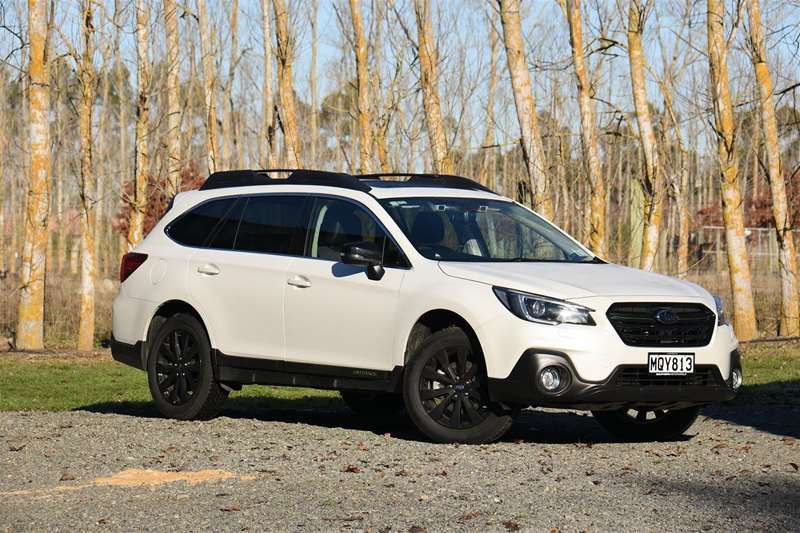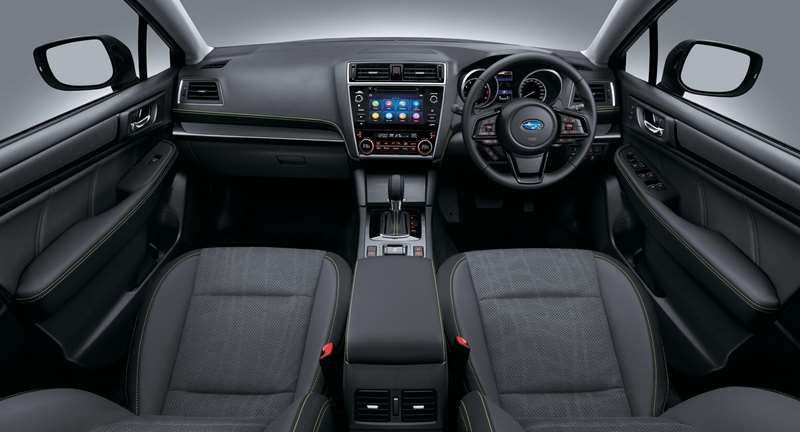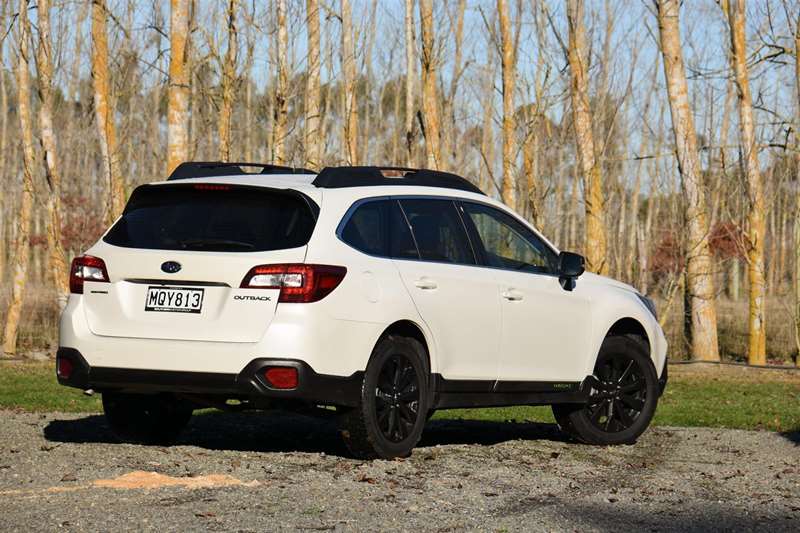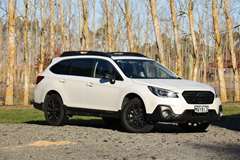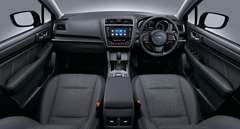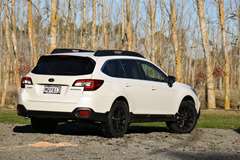Subaru is keeping its Outback lineup fresh with the new X variant. David Thomson checks it out.
What’s new?
Subaru’s SUV-like wagon, the Outback, is up for full replacement in 2021, but in the meantime there are various enhancements to the fifthgeneration machine.
Enter the Outback X, a limitededition variant that features its own livery, and marks the introduction of Subaru’s Dual X Mode all-terrain system — already deployed on the Forester — across the Outback range.
What comes as standard?
This new Outback variant takes the same drivetrain as other 2.5-litre Outbacks, with its boxerconfiguration engine producing the usual peak outputs of 129kW of power and 235Nm of torque. Power delivery is to all four wheels via a seven-stage Lineartronic continuously variable transmission, and symmetrical allwheel-drive.
Price-wise, the $49,990 Outback X slots into the middle of the 2.5-litre Outback lineup, between the $47,490 2.5i Sport and $52,490 2.5i Premium.
Aside from leather upholstery, the Outback Xtakes pretty much all the standard features of the Premium. These include a power-operated sunroof, heated power-operated front seats, satellitenavigation, avoiceactivated infotainment system, smartphone mirroring and poweroperated tailgate.
The Subaru EyeSight package leads its safety array, and spans precollision braking, brake assist, and throttle management systems, adaptive cruise control, lane departure warning, lane sway warning, lane keep assist, and lead vehicle start alert. Auto-dipping LED headlights and auto wipers are included, along with a surround-view camera system and reverse parking sensors.
What’s it like to look at?
Subaru sometimes labels the Outback as an SUV, and not without reason given its capabilities.
Visually, though, the Outback looks like a beefed-up high-rising wagon version of aconventional car. That’s what it has traditionally been too, having spawned from the wagon version of the old Legacy saloon. But the Legacy is now gone from the New Zealand new car scene, leaving the Outback as a distinct model here.
The X-derivative has its own distinctive look too, with black the colour of choice for its 18” alloy wheels, front grille, wing mirrors and rear badging. The grille and side badges feature subtle green accenting. This effect was particularly striking onthe test car, due to the contrast between the black accenting and its white paint finish.
What’s it like inside?
The Outback X’s special effects continue inside, with green stitching on the centre console, steering wheel, door inserts, gear shift gaiter and seats. The primary cabin trim is light cream above the window line, contrasting with dark trims below.
The choice of seat fabric is another notable feature of the Outback X, this being a mix of faux leather facings and side bolsters, and patterned water repellent cloth inserts. What this means in practice is that while the seats are not fully waterproof, they will handle a light drink spill, or perhaps even someone driving in wet clothing.
The Outback is first and foremost a very roomy machine.
The driving position is a halfway house between that of a conventional car and a full-blown SUV. Visibility is good, though shorter drivers will need to raise the seat as high aspossible to get a clear view of the front corners of the car. Ample storage is provided up front, key instruments and controls are well positioned, and the large centre touchscreen is clear and intuitive to use.
The spacious feel of the cabin extends to the rear seats, which provide ample head, shoulder and legroom as well as good visibility.
The wagon configuration ensures easy access to the boot, which has a 512-litre capacity, extending to more than 1800-litres with the rearseats folded forward. Plasticrails on the floor make iteasy to slide items in and out of the boot, but the downside is that items also tend to slide around when driving, unless the boot is full or they are tied down.
What’s it like to drive?
The Outback X is a fairlylarge car by contemporary standards and its onroad dynamics reflect both this feature and its high-riding nature.
While not a major inconvenience, one is aware of the Outback’s size when manoeuvring around town.
Out on the open road, everyday comfort is prioritised over razorsharp dynamic prowess, making the car an accomplished and fuss-free long-distance cruiser.
Performance is solid rather than scintillating, with the 129kW/235Nm engine at its best for snappy overtaking when SI (sports mode) is selected and the steering wheelmounted paddle shift controls are used. Mechanical refinement is good when cruising, and while the engine can become a trifle thrashy when worked hard, it benefits from a union with one of the most accomplished continuously variable transmissions around.
Economy is rated at 7.3l/100km on the standard cycle, a figure owners are unlikely to achieve in everyday driving, but which was matched on the highway portion of the Drivesouth test. A section of that test was conducted at night, during which the auto-dipping light function impressed.
Pushing the Outback Xdown a demanding set of tarmac twists and turns brings plenty of understeer and body roll, but few dynamic rewards.
On the other hand, moving on to gravel, dirt, or worse, plays to the vehicle’s broader strengths, and brings with it the chance to engage X-Mode.This system maximises loose surface traction by altering the responsiveness not only of the engine, but the transmission, the centre torque distribution, and brakes.
A first push of the X-modebutton located just aft of the gearshift engages a mode for dirt orsurfaces lightly covered by snow. As well as being utterly surefooted over such terrain, the test car proved both relaxing to drive on gravel, and comfortable too.
Should conditions warrant it, a second push on the same button brings a mode that adjusts X-Mode for mud or deeper snow, primarilyby allowing more wheelspin in the interests of maintaining momentum.
Those keen to further test Subaru’s claim that this is the most “outback Outback yet,” might also take note of a 213mm ground clearance that is better than that offered by plenty of more conventional crossover SUVs.
Verdict?
The original Outback was one of the trail blazers inaworld of crossover cars that has since become utterly mainstream. A quarter of a century and five model generations on, it remains one of the best of its kind.
